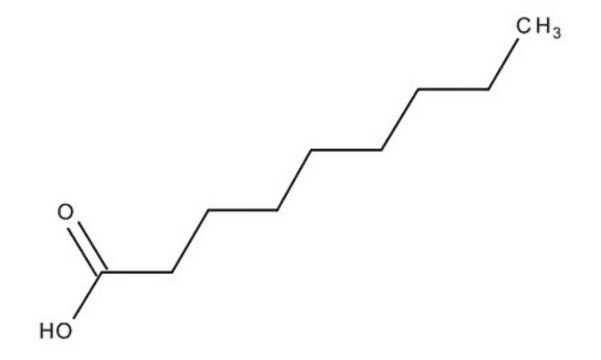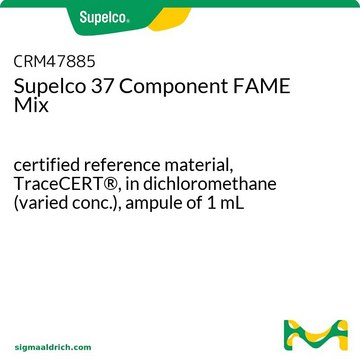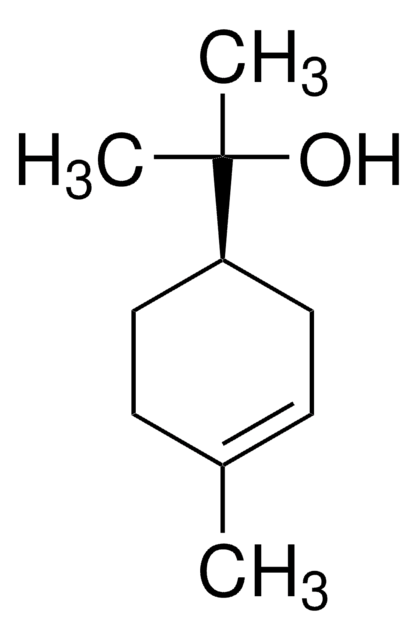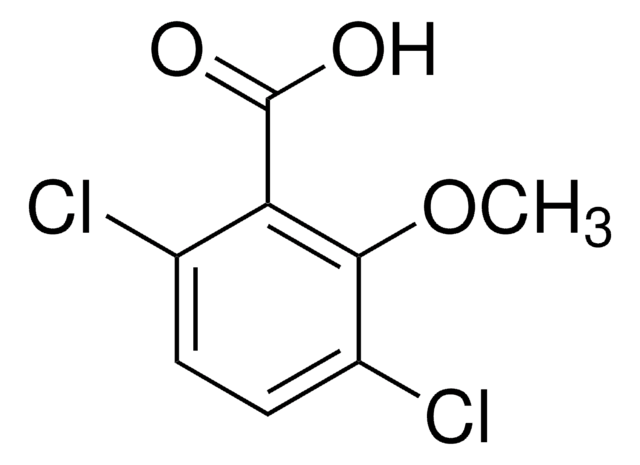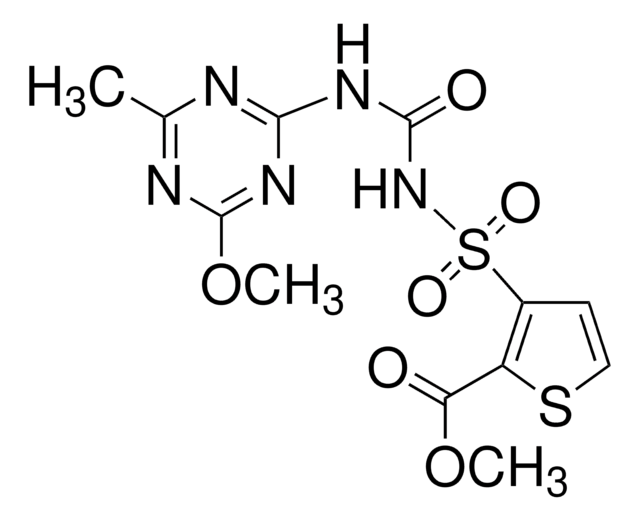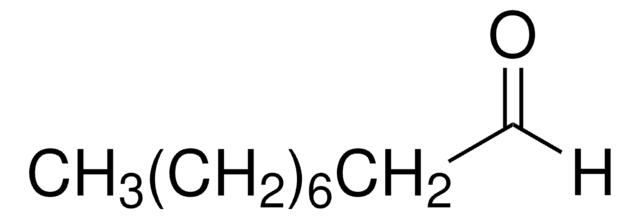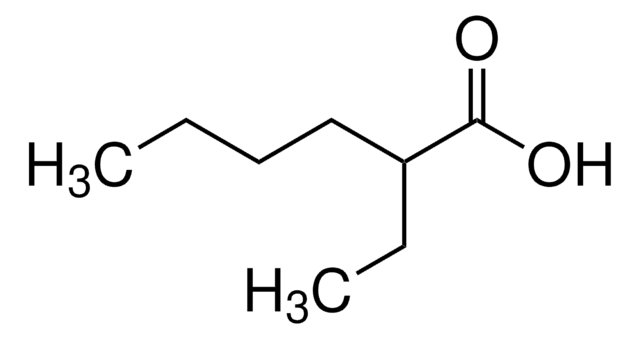73982
Nonanoic acid
analytical standard
Sinônimo(s):
Acid C9, Pelargonic acid
About This Item
Produtos recomendados
grau
analytical standard
Nível de qualidade
densidade de vapor
5.5 (vs air)
pressão de vapor
<0.1 mmHg ( 20 °C)
Ensaio
≥99.5% (GC)
prazo de validade
limited shelf life, expiry date on the label
Lim. expl.
9 %
técnica(s)
HPLC: suitable
gas chromatography (GC): suitable
índice de refração
n20/D 1.432 (lit.)
n20/D 1.432
p.e.
268-269 °C (lit.)
pf
9 °C (lit.)
densidade
0.906 g/mL at 25 °C (lit.)
aplicação(ões)
cleaning products
cosmetics
flavors and fragrances
food and beverages
personal care
Formato
neat
grupo funcional
carboxylic acid
Condições de expedição
ambient
temperatura de armazenamento
room temp
cadeia de caracteres SMILES
CCCCCCCCC(O)=O
InChI
1S/C9H18O2/c1-2-3-4-5-6-7-8-9(10)11/h2-8H2,1H3,(H,10,11)
chave InChI
FBUKVWPVBMHYJY-UHFFFAOYSA-N
Procurando produtos similares? Visita Guia de comparação de produtos
Aplicação
Palavra indicadora
Warning
Frases de perigo
Declarações de precaução
Classificações de perigo
Eye Irrit. 2 - Skin Irrit. 2
Código de classe de armazenamento
10 - Combustible liquids
Classe de risco de água (WGK)
WGK 1
Ponto de fulgor (°F)
278.6 °F - Pensky-Martens closed cup
Ponto de fulgor (°C)
137 °C - Pensky-Martens closed cup
Equipamento de proteção individual
Faceshields, Gloves, Goggles, type ABEK (EN14387) respirator filter
Escolha uma das versões mais recentes:
Já possui este produto?
Encontre a documentação dos produtos que você adquiriu recentemente na biblioteca de documentos.
Os clientes também visualizaram
Protocolos
In this study, SPME was used for the analysis of free fatty acids in Parmesan cheese using a 65 μm Carbowax/divinylbenzene (DVB) SPME fiber. Headspace extraction of the cheese sample was conducted at 65 °C for 15 minutes and analyzed by GC with FID detection. SPME is ideal for analyzing the volatiles associated with solid food samples. The phase chemistry of the Nukol GC column provides excellent peak shape of acidic compounds.
Nossa equipe de cientistas tem experiência em todas as áreas de pesquisa, incluindo Life Sciences, ciência de materiais, síntese química, cromatografia, química analítica e muitas outras.
Entre em contato com a assistência técnica

